speakers archive
Visualization for the people: towards authoring tools for creating and sharing personal data visualizations

Charles Perin
December 11, 2017 - 2:00PM
ICT 516
Biography
I am a Lecturer (eq. Assistant Professor) in the Department of Computer Science at City, University of London, and part of the giCentre research group.
I am a computer scientist specializing in information visualization and human computer interaction. I conduct research on designing and studying new interactions for visualizations and on understanding how people may make use of and interact with visualizations in their everyday lives. I am particularly interested in designing visualization tools for authoring personal visualizations and for exploring and communicating open data; in sports visualization; and in visualization beyond the desktop.
Before joining City, I was a Post-doc in the Department of Computer Science at the University of Calgary, InnoVis, with Sheelagh Carpendale. I obtained my PhD on Direct Manipulation for Information Visualization, at Université Paris Sud-XI in 2014, under the supervision of Jean-Daniel Fekete in the INRIA team AVIZ and Frédéric Vernier in the LIMSI-CNRS team AMI.
Abstract
Although more and more people generate, collect, and have access to data, only few people can visualize and makes sense of data, using efficient and mainstream, but relatively complex, visualization tools. In contrast, most people in their everyday lives lack tools for exploring, making sense of, and sharing data. Thus, most people lack the tools to participate in the increasingly data-driven stories and debates of modern society. I will propose and illustrate strategies for engaging people with data in their everyday lives, around interaction discoverability, personal agency and sense of control, and flexibility in exploring, authoring, and sharing personal data. I will further discuss how I envision visualization changing the relationship between self and data, by revealing how data is ubiquitous, personal and cherishable, experiential and reflective, and a medium for sharing stories about self and others.
Designing and Evaluating Community-Based In-Application Help for Feature-Rich Applications

Parmit Chilana
November 8, 2017 - 11:00AM
ICT 516
Biography
Parmit Chilana is an Assistant Professor at the School of Computing Science at Simon Fraser University where she directs the human-computer interaction (HCI) lab. Parmit’s core research in HCI focuses on the design and study of novel tools and techniques that help people use, learn, and program feature-rich software. Her work has been recognized with several awards and honors, including Best Paper and Honorable Mention awards at the ACM CHI conference. Parmit received her PhD from the University of Washington where her award-winning dissertation on crowdsourced contextual help became the basis of AnswerDash, a venture-funded startup in Seattle. Before coming to SFU, Parmit was an Assistant Professor at the University of Waterloo.
Abstract
Millions of users seek help every day to troubleshoot feature-rich software applications, learn new functionality, or find application-related information. Although many knowledgebases, tutorials, Q&A sites, and other approaches exist for technical help retrieval, few users find them useful for all their help needs. In this talk, I will describe our approach for supporting in-application help retrieval by inventing new systems and techniques that connect users with each other in the context of their own tasks.
I will first present LemonAid, a selection-based crowdsourced contextual help retrieval system that allows users ask questions and retrieve answers from other users within a web-based application by selecting a label, widget, image, or another interface element.
Next, I will describe Social CheatSheet, an interactive information platform for retrieving community-curated help in the sidebar of any web application and show how users can quickly generate and aggregate task-focused curated instructions and multi-step tutorials using a combination of their own annotated screenshots and snippets of web-based help resources.
Lastly, I will discuss some of our initial work in connecting users directly with experts by establishing a shared visual context and enabling in-context real-time conversations within a 3D modeling application. In presenting all of these systems, I will discuss results from various formative studies, lab studies, and field evaluations that shed light on the effectiveness, usability, and utility of these approaches and talk about opportunities for future research to explore how to offer more automatic targeted curated help to users of feature-rich software.
Defamiliarizing Data: A Humanistic Perspective
Biography
Dr. Stefania Forlini is Associate Professor of English at the University of Calgary. An expert in nineteenth-century literature, material culture, and critical theory, her research employs both traditional and more recent digital humanities methods for literary analysis to examine how the popularization of science and technology shapes literary forms and material aesthetic practices. Her publications span the areas of Victorian studies, science fiction studies, the digital humanities, and information visualization.
Abstract
The word “data” (from Latin) means that which is “given”. However, in humanities research, which depends heavily on interpretation, there are very few, if any, “givens”. This talk distills insights gained from incorporating information visualization into research in literary studies. In doing so, it considers how traditional humanistic practices of close reading and critical interpretation can help promote more ethical, creative and critically discerning engagements with data and its representations.
Thinking with Sketches: Leveraging Everyday Use of Visuals for Information Visualization

Jagoda Walny
July 12, 2017 - 3:00PM
MS 680
Biography
Dr. Jagoda Walny is a researcher interested in making software interfaces that support visual thinking about digital information. Her work is inspired and informed by “thinking sketches”, the casual, spontaneous sketches that help us to think in our everyday lives.
Jagoda completed her PhD at the Interactions Lab at the University of Calgary in 2016 under the supervision of Dr. Sheelagh Carpendale.
Abstract
The overarching goal of the information visualization community is to “amplify cognition” – that is, to help people to think — about data. However, the core approach to information visualization has not addressed the full range of activities that people tend to perform when they think. Observing these everyday thinking practices in knowledge workers and students makes it clear that, for many people, a normal and perhaps essential component of thinking includes creating their own visual externalizations. People sketch rough ideas; they refine concepts in notebooks and on whiteboards; they highlight and annotate texts while reading. We refer to such activities collectively as thinking with sketches. Deliberate support for this kind of thinking is largely absent from information visualizations; we explore the possibility of providing such support.
Infographics are (not only) about pictures

Doris Kosminsky
July 10, 2017 - 1:40PM
MS 680
Biography
Doris Kosminsky is a professor in the School of Fine Arts at the Federal University of Rio de Janeiro where she's a faculty member in the department of Visual Communication. She is actively involved in two graduate programs: Visual Arts and Design. She leads the Laboratory of Visuality and Visualization - LabVis, where undergraduate and graduate students practice interdisciplinary approach. Her main interests lie in information design, graphical representation, animation for information, interaction design, data visualization and visual arts. She was part of the visualization design team for the Energy Database at the Inter-American Development Bank in Washington, DC and for the Exploring Canada’s Energy Future pilot at the University of Calgary .
Currently she is a visiting researcher in the Interactions Lab at the University of Calgary, where she has been working on a project in collaboration with the National Energy Board.
Abstract
Infographics have been widely used to spread new ideas, stories and facts. Although the use of infographics can be fresh and unique, there is a long history of information representation. Besides this, some accepted concepts on vision, learning and cognition are not always well utilized leading to a misuse of the infographic format. In this talk, we will be presenting infographics historical foundations, related vision and cognition concepts and the differences between infographics and data visualization.Our aim is to understand what makes an infographic cool and remarkable. Good and bad examples will discussed as well as suggestions for the best outcome.
AudioMetro: interactive visualization for browsing sounds collections by content-based similarity

Christian Frisson
July 06, 2017 - 2:30PM
MS 680
Biography
Dr Christain Frisson was born in Thionville, France, in 1982, to a socializing nurse and perfect cook, and a civil engineering urban drawings drafter and bass guitar player, themselves spawned from an Ukranian refugee and a coal miner, a home nanny and an architectural painter.
He's have been a full-time contributor to the numediart Research Program on Digital Art Technologies since 2008 (that became the numediart Institute) and one core developer of the MediaCycle framework since 2010. His current research is to design user interfaces (tangible input and information visualization) for browsing media content (audio+video) organized by similarity.
Abstract
Sound designers source sounds in massive and heavily tagged collections. When searching for media content, once queries are filtered by keywords, hundreds of items are left to be reviewed. How can we present these results efficiently? We propose AudioMetro, an interactive visualization. Sounds are represented by content-based glyphs, mapping perceptual sharpness (audio) to brightness and contour (visual). These glyphs are positioned in a starfield display using Student t-distributed Stochastic Neighbor Embedding (tSNE) for dimension reduction, then a proximity grid optimized for preserving direct neighbors. Known-item search evaluation shows that our technique significantly outperforms a grid of sounds represented by dots and ordered by filename.
Developing and Generalizing Augmented Visual Perception

David Flatla
July 6, 2017 - 10:30AM
BI 211
Biography
Dr. David Flatla is a Lecturer and Dundee Fellow within Computing at the University of Dundee, Scotland. David leads the DAPRlab (Digitally-Augmented Perception Research lab), which seeks to enhance the day-to-day perceptual abilities of everyone - both people with impaired sensory capabilities as well as those with typical abilities. David's personal research focusses on helping people with impaired colour vision (ICV), both by developing new techniques for improving colour identification, as well as creating simulation techniques to help everyone else understand ICV. David's work has been awarded at both CHI and ASSETS.
Abstract
Technology has a tendency to be used for purposes other than what it was originally designed for, and technology for improving accessibility is no exception. In this talk, I will describe our work into developing accessible technology to improve visual perception, but with an eye on how our work can generalize more broadly. In particular, I will focus on our recent work on supporting lipreading (speechreading) acquisition, and for overcoming situationallyinduced visual impairment, as well as my own research areas of simulating and overcoming Impaired Colour Vision.
Accessible Web Visualizations: A Case Study

Patrick King
July 6, 2017 - 9:00AM
BI 211
Biography
Patrick King is a web developer with Vizworx who is focused on advanced browser application design, and who has been attached to the NEB's data visualization project since it began in 2016.
Abstract
The National Energy Board (NEB) has partnered with the Interactions Lab (ILAB) at the UofC and Vizworx Inc. to launch the NEB's Data Visualization Initiative: a project to communicate the NEB's work to the public through interactive data visualization on the web. As an entity of the Government of Canada, the NEB is required to make its web presence accessible to people with disabilities. This presentation will include a brief introduction to web accessibility technologies and standards, and their application to visualizations designed by students and researchers at ILAB. It will conclude with some condensed guidance for designing and implementing accessible web user interfaces.
Digital technologies and environmental change: examining the environmental footprint of our digital devices

Vanessa Thomas
July 5, 2017 - 2:30PM
MS 680
Biography
Once upon a time, I lived in a country far, far away. It was full of mounties and maple syrup and a bizarre orange substance called "mac and cheese." While there, I studied computer science, mathematics, physics, human security, peace building, internal communications, intercultural communications, graphic design, leadership, history, women's studies and a whole bunch of other subjects that didn't seem to be directly related to one another, except in my head. I used my unusual set of skills to find work in Canada, Ecuador, Bolivia and the United States of America. Then I found the HighWire Centre for Doctoral Training, which seemed like a great place for a disciplinary misfit like myself.
My doctoral research examines social practices and public policies that influence the environmental footprint of digital technologies. I am also a Research Associate with the Institute for Social Futures, where I explore some of the future implications of our digital technologies. My research interests and side projects are related to sustainable development, ICT4D, crisis informatics, human rights, public policy, "smart" cities, retrocomputing and retrogaming, urban development (especially in Latin America), open EVERYTHING (data, source software, Internet, education, government, etc), and human-computer interaction (HCI). 🙂
Abstract
Digital technologies and services affect the planet. Every line of code, every photo uploaded to ‘the cloud’, and every smartphone, computer, or ‘IoT’ device, has an environmental footprint. That footprint often takes the form of carbon dioxide emissions, ecosystem degradation, and resource depletion, each of which occur to varying degrees throughout the production, use, and end-of-life processing of digital technologies. In this talk, I describe and introduce the environmental effects of digital technologies, as well as
how social practices and public policies influence the footprint of digital technologies. I close by highlighting some of the exciting work being produced by HCI researchers in this domain, and some of the areas of work still in need of exploration.
Visual Narrative, Comics, Sketching and HCI

Miriam Sturdee
July 4, 2017 - 2:30pm
MS 680
Biography
Shape-changing interfaces - how do we design with and for them? What are the implications of this technology in research and for the wider public?
http://www.lancaster.ac.uk/scc/about-us/people/miriam-sturdee
Abstract
Sketches, comics-style narratives, and other visual forms of output can be an easy way for HCI researchers to communicate and express ideas, as well as to document, explore and communicate concepts between the researcher and user, collaborator, manager or client. Sketches are fast, lightweight, easy to create, and – by varying their fidelity – they can be used in all stages of the HCI research and design process. The visual narrative can offer a novel format for engagement, or communicate results to a wide audience in an accessible manner. We are all familiar with these forms, so where do they sit in current research practice? How do we encourage their use – and more – how can we teach our students to embrace these techniques at an early stage in their careers? We consider the implications of qualitative visual outputs in research, and how they form part of a wider, interdisciplinary practice of HCI.
Brought to you by:



